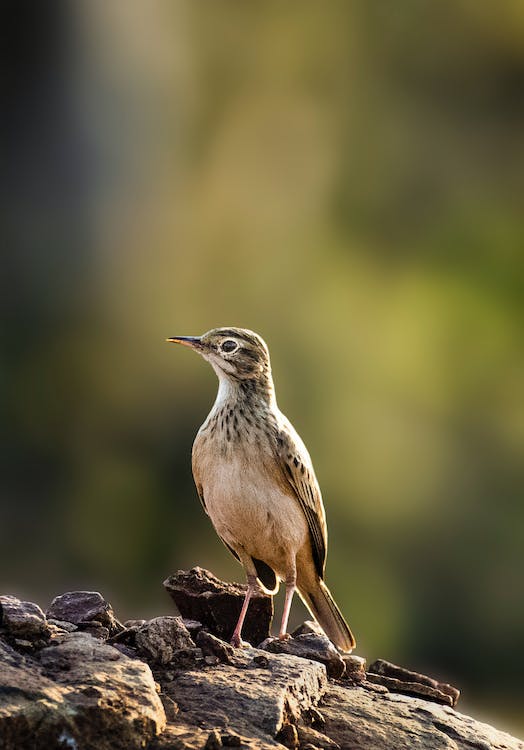It is a small, stubby lark, with a barred head, short bill, and scalloped tips on its wing feathers, producing a scaly appearance on its back. Pairs can often be seen in open woodlands, grassy savannas, drainage lines, and clearings, running slyly while catching insects in shrubs and grass tufts. The adult male performs a unique display, rising up to 100 meters, circling around its territory, while mechanically clapping its wings, accompanied by a chain of “prrrttt” calls.
Read further to know more about the Flappet Lark.
What is a Flappet Lark?
Flapper Lark is a lark species belonging to the family Alaudidae, occurring in much of sub-Saharan Africa. Its got its common name from the flapping sound it makes when it performs its distinct flight display. Their wing-flaps are more often heard than their song, compared to its cousins under the same genus that tend to produce noise both from wing-clapping and singing.
Its seven levels of classification are as follows:
Kingdom: Animalia
Phylum: Chordata
Class: Aves
Order: Passeriformes
Family: Alaudidae
Genus: Mirafra
Species: M. rufocinnamomea
Flappet Lark Physical Description
Flappets Larks is a small lark, growing from 5.5 to 5.9 inches or 14 to 15 centimeters while weighing 21 to 32 grams. It has rufous-brown to dark brown upperparts, buffy underparts, accentuated by light-brownish yellow outer tail feathers and a reddish wing panel. The head is streaky, bill is small, while the back has a scaly appearance.
Where can they be spotted?
Flapper Larks occur across sub-Saharan Africa Senegal Ethiopia, down to South Africa. They thrive in grassy savannas, drainage lines, clearings, and broad-leaved woodland, such as especially miombo, Burkea, Zambezi teak. Moreover, the species can also be seen in Acacia savannas and coastal grassland.
Interesting Facts You Should Know About the Flappet Lark
Flappet Larks primarily feed on grass seeds and invertebrates. They can be seen running wilily on the ground, looking for insects in shrubs and grass tufts. The insects it consumes include grasshoppers, caterpillars, beetles, termites, and mantids.
Adult male Flappet Larks are known for their unique flight display, characterized by wing-clapping under its body. It rises from the ground, about 50 to 100 meters then circles its territory. Such motion produces a distinct flapping sound, in which it gots its common name. A series of “prrrttt” notes may also be rendered during the aerial show, then followed by a “cheeerrro-weeee” song, resembling that of a canary.
The egg-laying season usually occurs from October to April, but peaks from November to February. The nest is a complete or partial dome cup, made out of dry plant matter and rootlets. It is commonly placed on a shallow depression on the ground across grass tufts.
The female Flappet Lark will lay 2-3 eggs, with brown and gray speckles or streaks. Incubation typically lasts about 11 to 16 days, and the chicks will be able to leave the nest after another 11 days.
Flapper Larks have a vast range, covering much of the African continent. They are currently classified as Least Concern (LC) under the IUCN Red List of Threatened Species.
WILDLIFE PARKS AND RESERVES WHERE THIS SPECIES IS FOUND:
BOTSWANA
SOUTH AFRICA
NAMIBIA
ZAMBIA
ZIMBABWE
BOTSWANA BIRDS | SOUTH AFRICA BIRDS
NAMIBIA BIRDS | ZAMBIA BIRDS | ZIMBABWE BIRDS

